History
Jauhar: The Haunting Tales of Chittorgarh
Published
5 years agoon
By
Vedic Tribe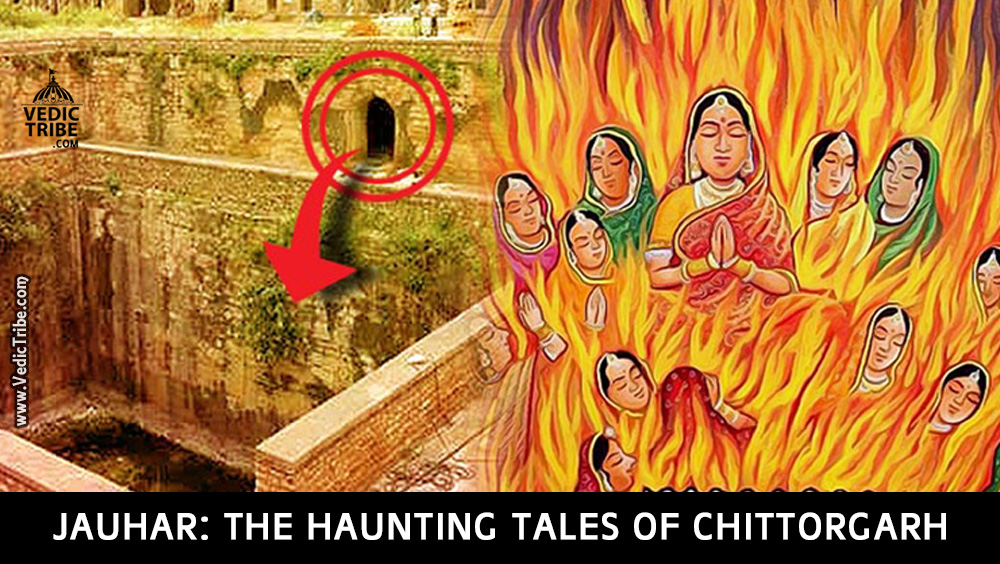
Chittor is a city and a municipality in Rajasthan state of western India. It lies on the Berach River, a tributary of the Banas, and is the administrative headquarters of Chittorgarh District and a former capital of the Sisodia clans of Rajputs of Mewar. The city of Chittorgarh is located on the banks of river Gambhiri and Berach. The district was bifurcated and a new district namely Pratap Garh was created with certain portion taken from Udaipur district in the newly created district of Pratap Garh.
Fiercely independent, the fort of Chittor was under siege three times and each time they fought bravely; three times Jauhar was committed by the ladies and children, first led by Rani Padmini, and later by Rani Karnavati. The famous warriors Gora and Badal, in the war against Allaudin Khalji (1303 AD), have become legendary. The sacrifice of Jaimal and Phata in the war against the Mughals (1568 AD) was so great that the Mughal Emperor Akbar installed their statues in the fort of Agra. It has also been land of worship for Meera. Chittorgarh is home to the Chittorgarh Fort, the largest fort in Asia.
Historically, it is considered that Chittor was built by the Maurya dynasty in the 7th century AD. It was then named Chitrakut after Chitrangada Mori, a Rajput chieftain as inscribed on ancient Mewari coins. The fort is surrounded by a circular wall which has seven huge gates before one can enter inside the main fort area. Some accounts say that the Mori dynasty was in possession of the fort when Bappa Rawal the founder of the kingdom of Mewar seized Chittor garh (Chittor fort) and made it his capital in 734 AD. While some other accounts say Bappa Rawal received it as a part of the dowry after marriage with the last Solanki princess. After that date his descendants ruled Mewar, which stretched from Gujarat to Ajmer, until the 16th century. Chittor was one of the most contested seats of power in India with probably some of the most glorious battles being fought over its possession. It is famous in the annals of the Mewar Dynasty as its first capital (prior to this, the Guhilots, forerunners of the Mewar Dynasty, ruled from Idar, Bhomat, and Nagda), and renowned in India’s long struggle for freedom. By tradition, it remained the Mewar capital for 834 years. With only brief interruptions, the fort has always remained in possession of the Sisodias of the Guhilot (or Gehlot/Guhila) clan of Rajputs, who descended from Bappa Rawal.

Rani Padmini
The first attack was by Alauddin Khilji in 1303 AD, who was enamored by the beauty of Padmini of which he had only heard. Rani Padmini preferred death to abduction and dishonor and committed jauhar (an act of self immolation by leaping into a large fire) along with all the other ladies of the fort. All the men left the fort in saffron robes to fight the enemy unto death. Chittorgarh was captured in 1303 AD by Alauddin Khilji, Sultan of Delhi who led a huge army. Elderly people then had the responsibility to raise the children. It was recaptured in 1326 by the young Hammir Singh, a scion of the same Gehlot clan. The dynasty (and clan) fathered by him came to be known by the name Sisodia after the village where he was born.
By the 16th century, Mewar had become the leading Rajput state. Rana Sanga of Mewar led the combined Rajput forces against the Mughal emperor Babur in 1527, but was defeated at the Battle of Khanua. Later in 1535 Bahadur Shah, the Sultan of Gujarat besieged the fort causing immense carnage. It is said that again just like in the case of Jauhar led by Padmini in 1303, all 32,000 men then living in the fort donned the saffron robes of martyrdom and rode out to face certain death in the war, and their women folk committed Jauhar led by Rani Karnawati. The ultimate sacrifice for freedom, Jauhar was again performed for the third time after the Mughal Emperor Akbar captured Chittorgarh in 1568. The capital was moved west to Udaipur, in the foothills of the Aravalli Range, where Rana Udai Singh II (the young heir apparent) had established a residence in 1559. Udaipur remained the capital of Mewar until it acceded unto the union of India in 1947, and Chittorgarh gradually lost its political importance.
Bhumihars along with others, in some places, were also involved in anti-Muslim communal violence during the Partition of India and during the 1893 Anti-Muslim riots. Chittorgarh is also famous for its association with two very widely known historical figures of India. The first is, Meera Bai the most famous female Hindu spiritual poetess whose compositions are still popular throughout North India. Her poems follow the Bhakti tradition and she is considered to be most passionate worshiper of lord Krishna. Folklore says that her love for Krishna was epitomized by her final disappearance in the temple of Krishna in Dwarka. She is believed to have entered the sanctum of the temple in a state of singing ecstasy after which the sanctum doors are believed to have closed on their own and when later opened, the sari of Mirabai was seen enwrapped around the idol of Lord Krishna, symbolizing the culmination of her union with her Lord.

Rani Padmini Jauhar
The great Maharana Pratap, son of Rana Udai Singh II who is regarded as a personification of the values Rajputs cherish and die for. He took an oath to spend his life living in the jungles and fighting until he could realize his dream of reconquering Chittorgarh from Akbar (and thus reclaiming the glory of Mewar). It was the dream greatly cherished by Maharana Pratap, and he spent all his life to achieve this goal. He underwent hardships and a life of eating breads made of grass while fighting his lifelong battle. Maharana Pratap is the greatest hero in the eyes of the Raputs of Mewar. In the absolute dark era of Rajput history, Maharana Pratap alone stood firmly for his honour and dignity, never compromising his honour for safety. With the reputation of a brave man with great character even among his enemies, he died free in 1597.
Chittorgarh remains replete with historic associations and holds a very special place in the hearts of Rajputs, as it was a bastion of the clan at a time when every other stronghold had succumbed to invasion. It is often called as the “Bhakti aur Shakti ki nagari” (land of devotion and strength). The fort and the city of Chittorgarh also hosts the biggest Rajput festival “Jauhar Mela”. It takes place annually on the anniversary of one of the jauhars, not the one by Padmini which is most famous. This festival is to commemorate the bravery of Rajput ancestors and all three Jauhars which happened at Chittorgarh. A huge number of Rajputs which include the descendants of most of the princely families do a procession to celebrate the Jauhar. The fort at Chittorgarh also contains the ancient and beautiful temple to Goddess Kali called the Kalika Mata Temple.
First Jauhar of Chittor
In 1303 AD, Ala-ud-din Khilji, the Muslim Sultan of Delhi besieged Chittor fort, which was under the control of Rana Rawal Ratan Singh. The Rana allowed Khilji one glimpse of his wife, Rani Padmini, in a mirror, before he was at the gates and held hostage for Padmini. Padmini sent misleading information that she would join Ala-ud-din, but she was to come with 700 women as befitted her status. The Rajputs were thus able to infiltrate about 2000 men into Ala-ud-din’s camp. Each Palaqi Palanquin) contained two Rajput soldiers and four men to lift it. Gora and Badal were leading this team. Ala-ud-din allowed Padmini one final meeting with her husband, which allowed the Rajputs to whisk Ratan Singh out from under the Khilji king’s nose. Beaten, Ala-ud-din returned to Delhi, only to come back better equipped early the next year. The Rajput defense failed as a result of this second attack and, to a man, perished on the battlefield while their womenfolk, led by Maharani Padmini, performed Jauhar.
The siege of Chittor, its brave defense by the Guhilas, the saga of Rani Padmini and the Jauhar she led are legendary.

Saka committed by Rajput warrior
Second Jauhar of Chittor
Rana Sanga died in 1528 AD after the Battle of Khanua. Shortly afterwards, Mewar and Chittor came under the regency of his widow, Rani Karnavati. The kingdom was menaced by Bahadur Shah of Gujarat, who besieged Chittorgarh. Without relief from other forces and facing defeat, the Rani committed Jauhar with other women on March 8, 1535 A.D. while the Rajput army sallied out to meet the besieging Muslim army and committed saka.
According to one romantic legend of dubious veracity, Karnavati importuned the assistance of Humayun the son of Babur, her late husband’s foe, by sending him a Rakhi and a request for his help as a brother. The help arrived too late. This is the occasion for the second of the three Jauhars performed at Chittor.
Third Jauhar of Chittor
Emperor Akbar besieged the fort of Chittor in September 1567. Changing the strategy, Rana Udai Singh II, his sons and the royal women, using secret routes, escaped soon after the siege began. The fort was left under Jaimal Rathore and Patta Sisodiya’s command. One morning Akbar found Jaimal inspecting repairs to the fort which had been damaged by explosives, and killed him. That same day the Rajputs realized that defeat was certain. The Rajput women committed Jauhar in the night of February 22, 1568 AD, and the next morning, the Rajput men committed saka. Abul Faz’ has given a true account of the event as seen by Akbar in his biography in 1568 AD.
SAKA & JAUHAR TRADITION
Jauhar: When the outcome of a battle was against the Rajputs, jauhar would be committed by Rajput women and children in the night and next morning men would commit saka. Brahmin priests would chant Vedic mantras and Rajput women wearing their marriage dresses, along with their young children, embrace sandalwood flames.

Jauhar of Chittorgarh
Saka: The next morning after taking a bath, the men would wear kesariya (saffron) and apply the ash from the maha samadhi of their wives and children on their foreheads and put a tulsi leaf in their mouth. Then the Palace Gates would be opened and men would ride out for complete annihilation of the enemy or themselves. Rajput men and women could not be captured alive.
When Hindus fought against other Hindus there were never any jauhars or saka because the defeated were treated with dignity. However, history records very few instances wherein a Rajput king sued for peace after a battle reversal and the Mughals initially agreed to the peace terms, only for the Rajputs, and their women and children, to be slaughtered upon surrender and once the pols (or gates) of their mighty fortresses were opened.
One example of this is war between Puran Mal of Raisina (now in Madhya Pradesh) and brutal Afghan Sher Shah Suri. The opposite is true for wars between Marathas and Rajputs, where even after battle reversals, no jauhars took place in Rajasthan.
REASON FOR JAUHAR
If the Mughals got hold of the dead bodies of the kafir women after victory in the battle, they would then rape even the dead bodies of these women. It was to prevent such ‘desecration’ of their own bodies after death by poison that the Rajput women used to jump into the pits of fire. Thus, when the Mughals finally came to the city, they did not find a single woman’s body, dead or alive.
Hence, the reason as to why this system (which is said to be inhuman today) came into existence, can be understood only in the light of the brutality of Afghan Pathan Plunderers…
You may like
-


Seven Vows and Steps (pheras) of Hindu Wedding explained
-


Sari or Saree is symbol of Indian feminism and culture
-


Atithi Devo Bhava meaning in Hinduism and India
-


Navaratri: The Nine Divine Nights of Maa Durga!
-


Significance of Bilva Leaf – Why is it dear to Lord shiva?
-


Concept of Time and Creation (‘Brahma Srishti’) in Padma Purana
History
Snakes and Ladders, Originated in Ancient India called Mokshapat or Moksha Patamu
Published
5 years agoon
January 21, 2021By
Vedic Tribe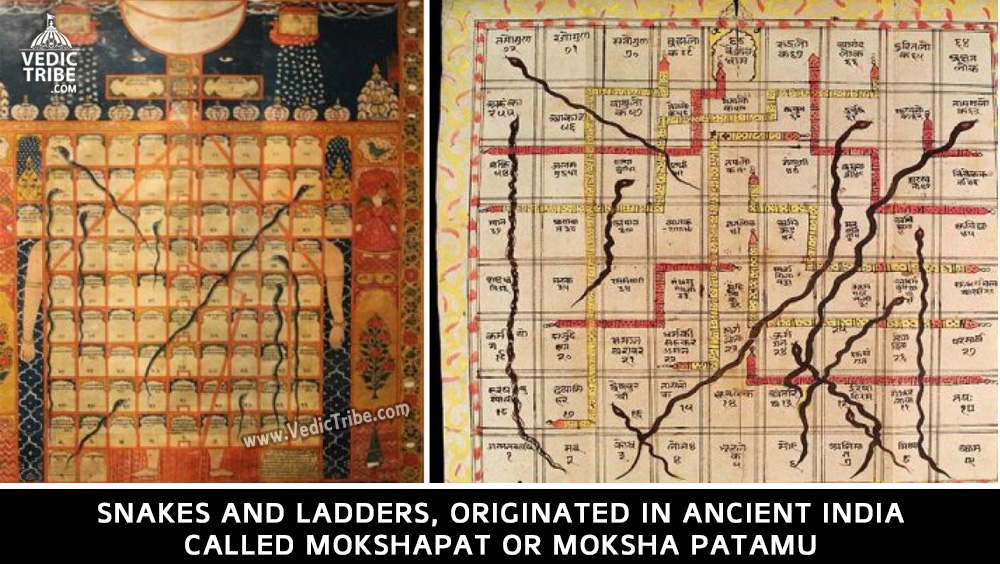
The board game, today called Snakes and Ladders, originated in ancient India, where it was known with the name Mokshapat or Moksha Patamu.
It’s not exactly known when or who invented it, though it’s believed the game was played at a time as early as 2nd century BC. According to some historians, the game was invented by Saint Gyandev.
Originally, the game was used as a part of moral instruction to children. The squares in which ladders start were each supposed to stand for a virtue, and those housing the head of a snake were supposed to stand for an evil. The snakes outnumbered the ladders in the original Hindu game. The game was transported to England by the colonial rulers in the latter part of the 19th century, with some modifications.
Through its several modifications over the decades, however, the meaning of the game has remained the same — ‘that good deeds will take people to heaven (Moksha) while evil deeds will lead to a cycle of rebirths in lower form of life (Patamu).
The modified game was named Snakes and Ladders and stripped of its moral and religious aspects and the number of ladders and snakes were equalized. In 1943, the game was introduced in the US under the name Chutes and Ladders.
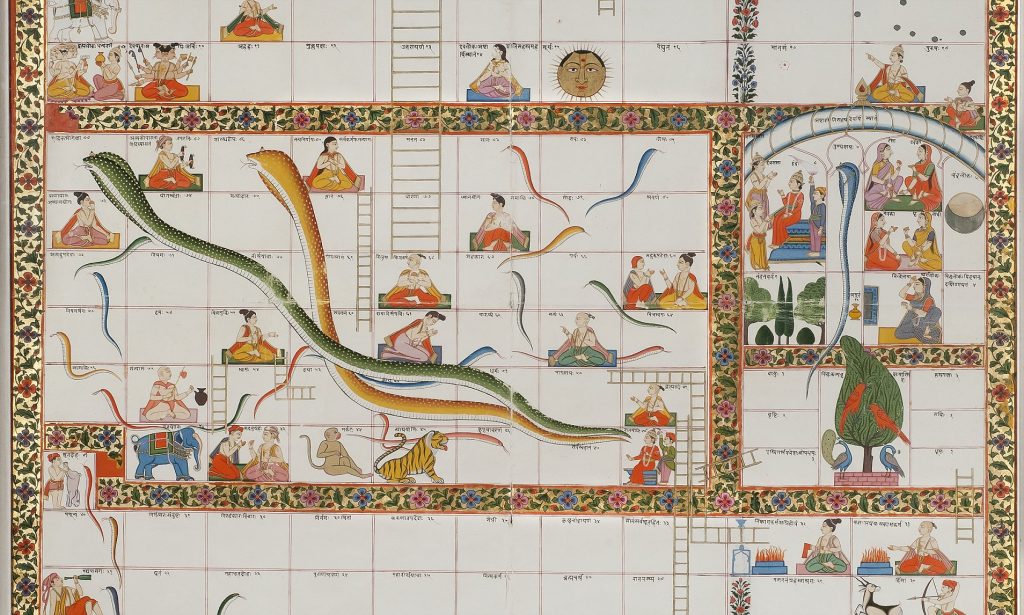
The Game of Knowledge
Originally, the game of Snakes and Ladders was known variously as Gyan Chaupar (meaning ‘Game of Knowledge), Mokshapat, and Moksha Patamu, and was originally a Hindu game. Nobody knows for sure as to who invented this game, or when it was created.
It may be said that whilst the gameplay of Gyan Chaupar is the same as today’s Snakes and Ladders, the board and higher objective of the game may be said to be quite different. Like the modern Snakes and Ladders board, the number of squares in that of Gyan Chaupar may vary. One version of this board, for instance, contains 72 squares, whilst another has 100. A major difference between the traditional and modern versions is the fact that in the former, a virtue or a vice and the effects of these virtues and vices, or something neutral is placed within each box.
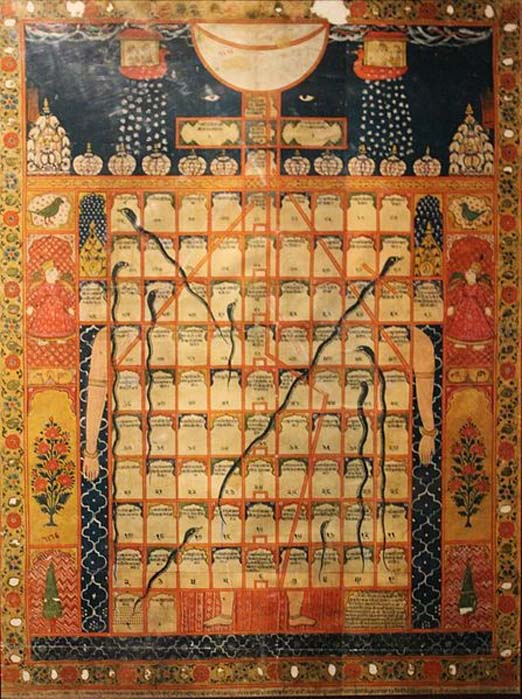
For instance, in an Indian Gyan Chaupar board of 72 boxes, squares number 24, 44, and 55 have the vices of bad company, false knowledge, and ego respectively. As the game places great emphasis on karma, the Hindu principle of cause and effect, each vice (the snakes’ heads) has a corresponding effect. Thus, for the vices mentioned above, the corresponding effects are conceit or vanity, plane of sensuality, and illusion. On the other hand, the virtues of purification, true faith, and conscience are contained in squares number 10, 28, and 46, and these lead to heavenly plane, plane of truth, and happiness respectively. In this version of the board, the goal is to reach box number 68, which is the plane of Shiva.
Religious Teaching Tool
This game was so popular that it was also adopted and adapted by other religions that existed in the Indian subcontinent. It is known that Jain, Buddhist, and Muslim adaptations of the game exist, as the concepts of cause and effect, and reward and punishment, are common to them. For devout followers of these religions, the game may be played as a form of meditation, as a communal exercise, and even as part of one’s religious studies without the use of more conventional books or sermons.
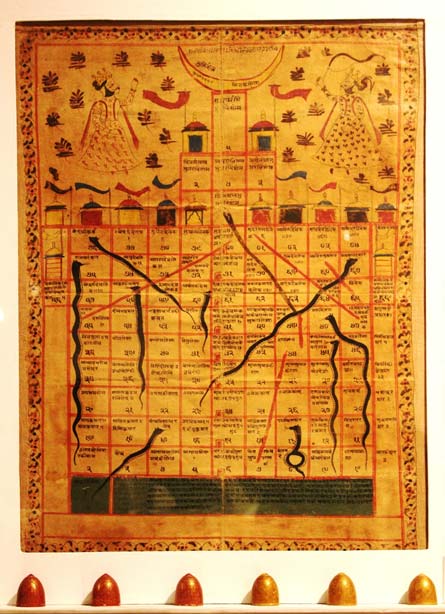
It may be added that many of the surviving game boards are works of art in their own right, as they contain elaborate illustrations of human figures, architecture, flora and fauna, etc. These boards were commonly made of painted cloth, and most of the extant ones date from after the middle of the18th century AD.
The Modern Game
The game of Gyan Chaupar became Snakes and Ladders towards the end of the 19 th century, when it was introduced to Great Britain by India’s colonial rulers. Whilst the original gameplay was maintained, its underlying philosophical message was greatly diminished. The religious virtues and vices were replaced by two-part cartoon dramas connected either by a snake or a ladder. Additionally, the number of snakes and ladders were equalized, whilst in the original ones, there were usually more snakes than ladders, which symbolizes the belief that it is far easier to fall prey to vice than to uphold virtue. From Great Britain, the game traveled to the United States, where it was introduced in 1943 by Milton Bradley as Chutes and Ladders.
Bharat
Telhara University – Older than Nalanda, Vikramshila Universities
Published
5 years agoon
December 29, 2020By
Vedic Tribe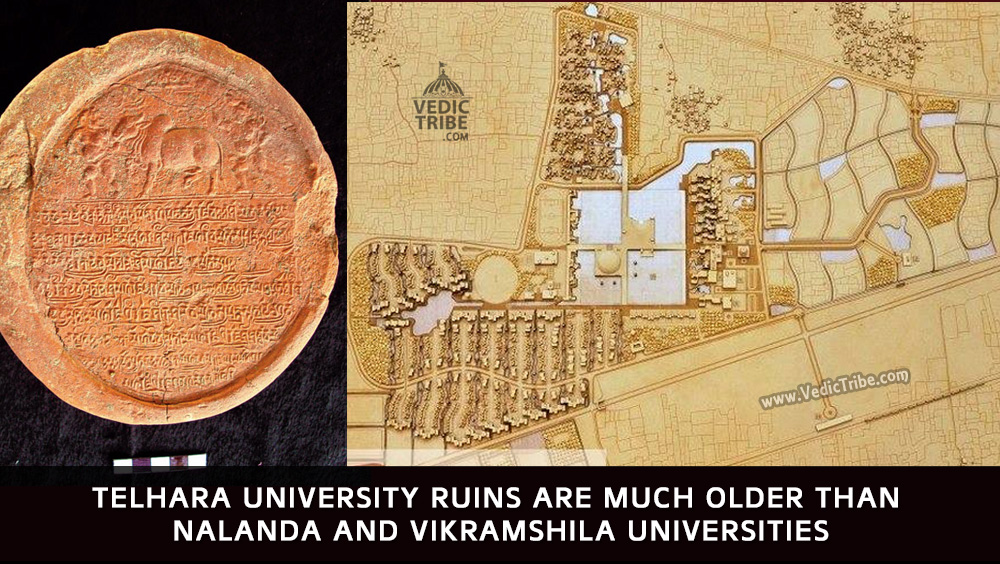
It was a useful mound, no doubt. A good vantage point where villagers occasionally relieved themselves.
But who would have thought that deep beneath its golden brown earth would be stories of dynasties and empires that now suggest that this — Telhara, a village 33 km from the ruins of the more famous Nalanda University — could be ‘Tilas-akiya’ or ‘Tiladhak’, the place Chinese traveler Hiuen Tsang visited and wrote about during his travels through India in 7th century AD? So far, there were only vague references but recent excavations at the mound suggest that Telhara was indeed an ancient university or seat of learning with seven monasteries.
The Bihar government has been calling the Telhara project one of its biggest after the excavations that unearthed Nalanda and Vikramshila universities. The excavation at Telhara should have happened earlier, say experts, but the site lost out to the more famous Nalanda.
The Telhara project that started on December 26, 2009, has so far come across over 1,000 priceless finds from 30-odd trenches — seals and sealing, red sandstone, black stone or blue basalt statues of Buddha and several Hindu deities, miniature bronze and terracotta stupas and statues and figurines that go back to the Gupta (320-550 AD) and Pala (750-1174 AD) empires. But the 2.6-acre mound has now thrown up the most tantalising find yet — evidence of a three-storied structure, prayer hall and a platform to seat over 1,000 monks or students of Mahayana Buddhism.
The terracotta monastery seals — a chakra flanked by two deers — unearthed at Telhara are similar to those at Nalanda, suggesting Telhara or Tiladhak was another great seat of learning besides Nalanda and Odantpuri during the Gupta and Pala reigns. It was the discovery of a similar monastery seal that clinched it for Nalanda University.
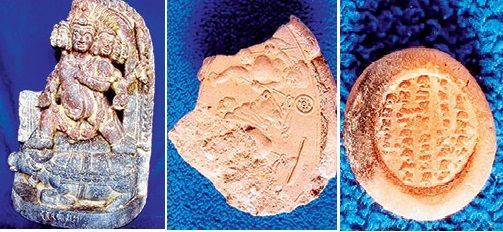
Former Archaeological Survey of India director B S Verma, who between 1971 and ’81 supervised the excavation at the site of the ancient Vikramshila university, says, “Telhara or Tiladhak has much more convincing epigraphical proofs — monastery inscriptions — than Vikramshila. The findings that match Hiuen Tsang’s account do more to convince that the place was a university or mahavihara similar to Nalanda.”
In his book, The Antiquarian Remains in Bihar, historian D R Patil writes about Hiuen Tsang’s description of Telhara. “Hiuen Tsang describes Telhara or Tilas-akiya as containing a number of monasteries or viharas, about seven in number, accommodating about 1,000 monks studying in Mahayan. These buildings, he says, had courtyards, three-storied pavilions, towers, gates and were crowned by cupolas with hanging bells. The doors and windows, pillars and beams have bas relieves (sculptures in guilded copper). In the middle vihara is a statue of Tara Bodhisatva and to the right (is) one of Avlokiteshwar”.
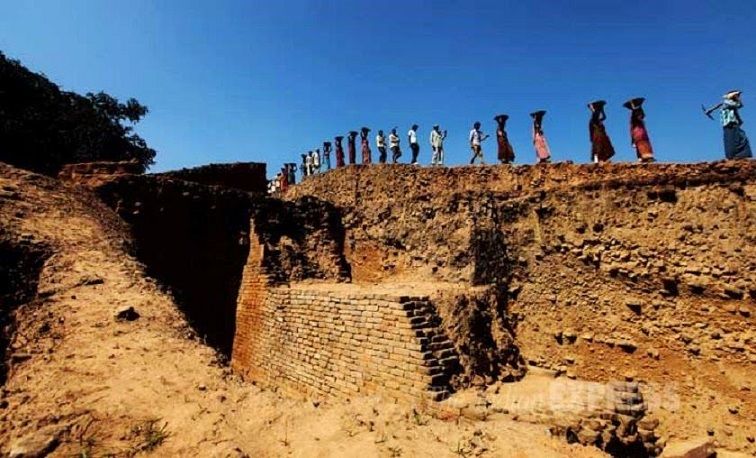
Other history books too talk of Tiladhak monastery, on the western side of Nalanda, as having four big halls and three staircases. It is said the mahavihara or university was built by one of the descendants of Magadha ruler Bimbisara. The monastery was decorated with copper and also had small copper bells that gently chimed in the breeze.
For months now, the excavation has been unearthing these stories. Apart from the mound that is now being dug up, Telhara has six other mounds — five of which have settlements and one which is partially elevated.
Atul Kumar Verma, director (archaeology) of the Bihar government’s Department of Art and Culture, says, “Since the excavations suggest that Telhara might have been a contemporary of Nalanda, it is quite possible that it was either an independent university for specialized education or that students graduating from Nalanda University would come here for specialized study. It is a great feeling to see the place emerging as the next big find after Nalanda. It has also aroused great curiosity and attracted even the likes of Nobel laureate Amartya Sen.” Sen wrote in the visitors’ book: “What a wonderful site, really thrilling! And so skillfully excavated and restored.”
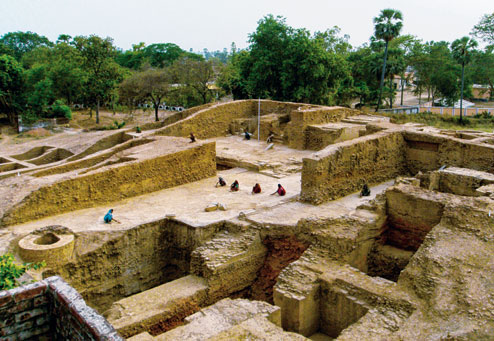
“We have found the courtyard that might have been an extension of the platform Hiuen Tsang had described,” Nand Gopal, camp in-charge at the Telhara site, says, peering into his optical line meter that’s mounted on a tripod.
In more recent times, it was A M Broadley, then magistrate of Nalanda, who in 1872 wrote about “Tilas-akiya” as a university and site of learning. British army officer and archaeologist Sir Alexander Cunningham, who visited the place between 1872 and 1878, wrote about inscriptions describing “Teliyadhak” as a place that had seven monasteries and which matched Hiuen Tsang’s account. A statue of the 12-armed Avlokiteshwar Buddha found from a Tiladhak site is at the Indian Museum in Kolkata. Perhaps the best known Pala sculpture from Telhara is now in Rietberg Muzeum, Zurich.
Though there was this and more proof that Telhara could be sitting on a glorious past, it wasn’t until December 2009 that the excavations finally began. Telhara panchayat head Awadhesh Gupta claims to have been the one who got things started.
“We all knew Telhara was once a great seat of learning, but nobody did anything to prove it. In 1995, I approached the Congress government requesting that the place be excavated but got no assurance. When Bihar Chief Minister Nitish Kumar visited the site in 2007, I put up this demand once again. The villagers were not happy with me. They thought I should have demanded something more concrete than just the digging of a mound.”
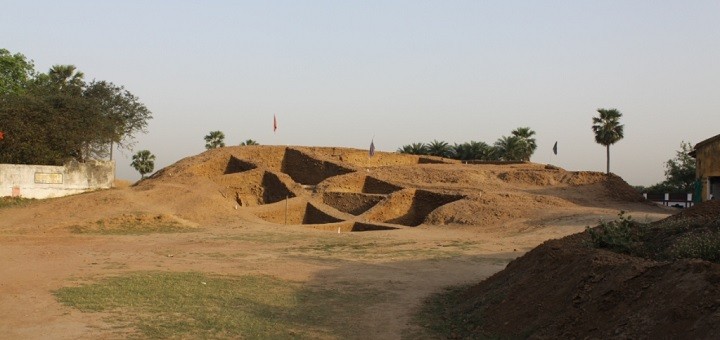
But the mukhiya may have had the last laugh. Villagers now talk about Telhara being part of the Nalanda-Rajgir circuit and how that could bring them jobs and better opportunities. “We hope the site is conserved and clubbed with Nalanda to attract tourists. The site has already given temporary jobs to 70 villagers,” says Anil Kumar, a villager.
It was a useful mound, no doubt.
Experts associated with its excavation are now claiming that the university originated in the Kushan period.
Atul Kumar Verma said that in the recent excavation, archaeologists have found some bricks of very large size (42x36x6.5cm) substantiating that the university belonged to the Kushan period. “Bricks of the Kushan period were quite large from other dynasties, including the Gupta and Pala periods,” said Verma.
While the Kushan period is considered to be 1st century AD, the Gupta dynasty ruled from 3rd to 6th century AD.
MAJOR FINDINGS
SEALS AND SEALING
The recovery of over 100 terracotta seals and sealings from the Gupta and Pala periods provides strong evidence of this being a Buddhist university. Besides seals of the chakra flanked by two deers, other seals have inscription of Buddhist mantras. Seals of Gaj-Lakshmi and flying birds were also found. Some inscriptions that have not yet been deciphered would be sent to Mysore for deciphering.
PLATFORM, TEMPLES
Just above the ashen layer — said to be proof of Turkish general Bakhtiyar Khilji having destroyed the monastery — is the sanctum sanctorum of three Buddhist shrines, each measuring 3.15 square metres. A big platform, found just below this ashen layer, is said to have accommodated over 1,000 monks.
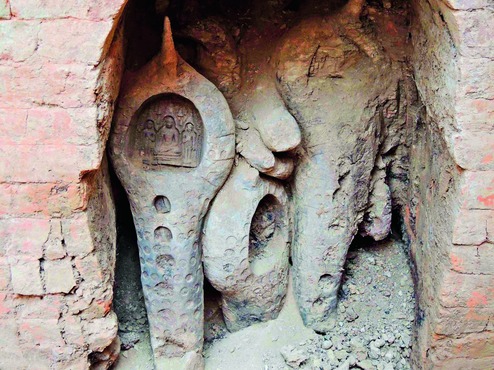
CELLS FOR TEACHERS
The excavation has so far revealed 11 cells of 4 square meters each. It is believed that these were faculty quarters. There is evidence of bricks from the Gupta and Pala periods.
COPPER BELL CHIMES
The excavation revealed several broken pieces of small bells. Parts of molten copper also suggest that the monastery was well-decorated.
CAUTION INSCRIPTION
A stone inscription in Sanskrit (early Nagari script), probably written just before the destruction of the Tiladhak mahavihara, says, “He who tries to destroy this monastery is either a donkey or a bull”. Below the stone inscription are images of the two animals.
FASTING BUDDHA AND VOTIVE STUPA
A miniature terracotta image of a fasting Buddha from the Pala period is a rare find. A six-foot-tall votive stupa from the Pala period suggests the prevalence of Buddhism.
MAURYAN PERIOD
Bone tools and pottery shards of Northern Black Polished Ware points to this being a settlement in the Mauryan period.
STONE SCULPTURES
Among the over 15 stone sculptures found at the site are a red sandstone sculpture of Bodhisatva, Avlokiteshwar, Manjusri and the Buddha in his ‘earth witness’ mudra. A black stone statue of Buddha in abhay mudra (fearless mode) from the Pala period has been found. The red sandstone Bodhisatva sculpture is believed to be from the Gupta period. Some sculptures of Hindu deities such as Uma Maheshwar and Ganesh and Vishnu from the later Pala period were also found. The presence of a Yamantaka sculpture is evidence of Tantric Buddhism at the monastery.
History
India’s first Islamic Mausoleum Was Built on Top of Ancient Hindu Temple
Published
5 years agoon
December 28, 2020By
Vedic Tribe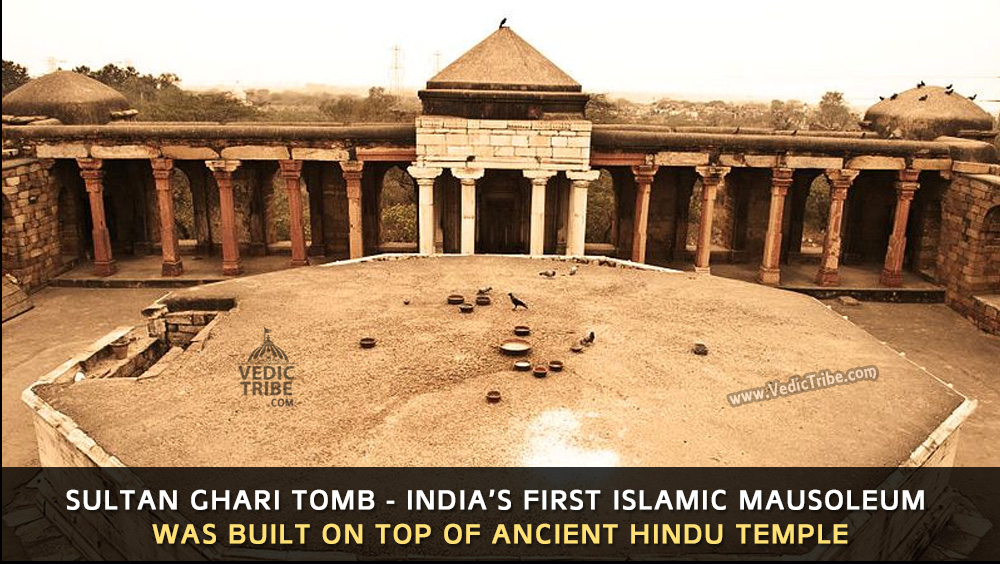
About 6 km west of Qutab Minar in Delhi, there lies a tomb called Sultan Ghari which is believed to be the final resting place of Prince Nasir’ud-Din Mahmud, the uncrowned eldest son of Sultan Shamsuddin Iltutmish of the Slave Dynasty built in 1231 AD. It was the first Islamic Mausoleum built in India.
However, engraved symbols of animals, Shiva Linga and the Sanskrit inscriptions on ceiling tell a different tale altogether. The beams of the octagonal crypt bear figures of Kamadhenu, the celestial cow and Varaha, the wild boar reincarnation of Lord Vishnu. These two animals were a royal Hindu insignia and considering the ideology of Islam against idols and the immense hatred towards pigs, it is very unlikely that such statues would adorn the inside of a Muslim tomb.
![]()
Iltutmish invaded eastern part of India in 1225 AD which resulted in signing of a treaty between him and Iwaz Khalji, the ruler of Eastern India. After a few successive battles, Prince Nasiru’d-Din Mahmud was appointed governor of Lakhnauti province who later merged the province of Oudh with Bengal and Bihar, gaining him the title of “Malik-us-Sharq” (King of the East) by his father.
The Prince was killed in 1229 AD after a very short rule of 18 months. Grieved by the death of his favourite son, Iltutmish commissioned the Sultan Ghari Tomb. After Iltutmish’s death in 1236, his daughter, Razia Sultana ruled the kingdom until her defeat and death in 1240 AD.
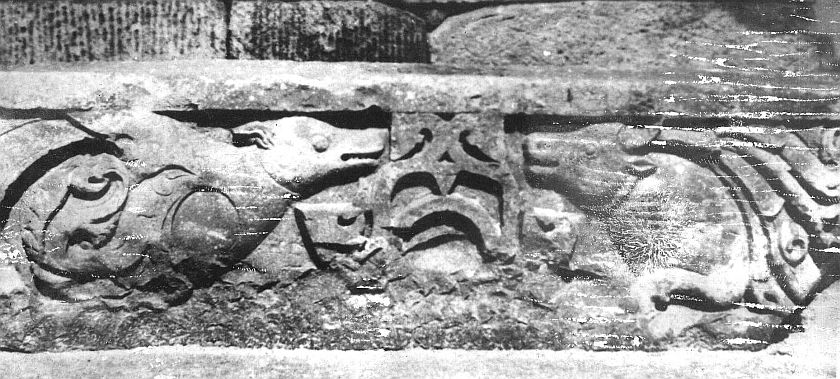
While ASI is pretty much silent on this matter, historians and archaeologists justify these carvings as new buildings being fashioned out of the debris of some Hindu buildings or that the workmen may have been Hindus and would have built the tomb in Hindu style. Their arguments in favor of the tomb fail here because no building worth its name can be build out of old debris and no workman would even dare to fashion a building for which he is hired according to his taste rather than that of the owner’s.
The building is also of an octagonal shape which is another Hindu specialty.
Due to indifference or perhaps purposeful negligence by the government and ASI, we may never know the reality and history of this ancient Hindu temple.

Follow us on Facebook
Follow us on Twitter
Latest


Seven Vows and Steps (pheras) of Hindu Wedding explained
Views: 9,213 Indian marriages are well renowned around the world for all the rituals and events forming part of the...


Sari or Saree is symbol of Indian feminism and culture
Views: 7,434 One of the most sensual attires of a woman in India is undoubtedly the sari. It is a...


Atithi Devo Bhava meaning in Hinduism and India
Views: 7,204 Atithi Devo Bhava, an ancient line taken from the Hindu scriptures and was originally coined to depict a visiting person whose...


Sanskrit Is More Than Just A Method To Communicate
Views: 5,396 -By Ojaswita Krishnaa Chaturvedi anskrit is the language of ancient India, the earliest compilation of sound, syllables and...


Significance of Baisakhi / Vaisakhi
Views: 6,621 Baiskhi is also spelled ‘Vaisakhi’, and is a vibrant Festival considered to be an extremely important festival in...


Navaratri: The Nine Divine Nights of Maa Durga!
Views: 7,725 – Shri Gyan Rajhans Navratri or the nine holy days are auspicious days of the lunar calendar according...


History of Vastu Shastra
Views: 10,959 Vastu Shastra (or short just Vastu) is the Indian science of space and architecture and how we may...


Significance of Bilva Leaf – Why is it dear to Lord shiva?
Views: 10,576 – Arun Gopinath Hindus believe that the knowledge of medicinal plants is older than history itself, that it...


Concept of Time and Creation (‘Brahma Srishti’) in Padma Purana
Views: 10,855 Pulastya Maha Muni affirmed to Bhishma that Brahma was Narayana Himself and that in reality he was Eternal....


Karma Yoga – Yog Through Selfless Actions
Views: 9,731 Karma Yoga is Meditation in Action: “Karma” means action and “yoga” means loving unity of our mind with...

